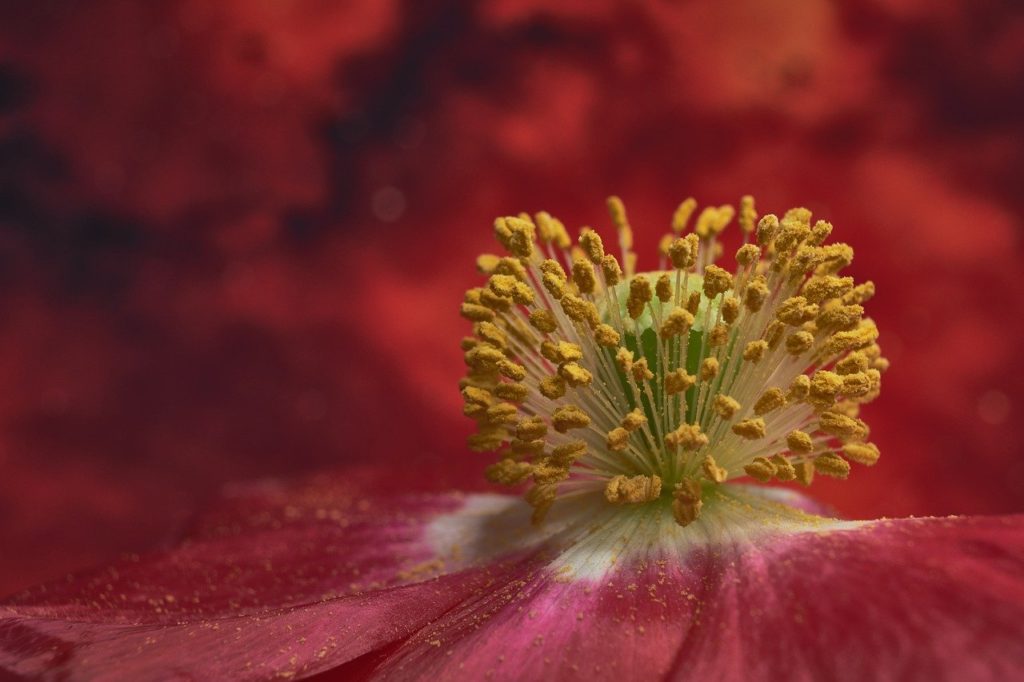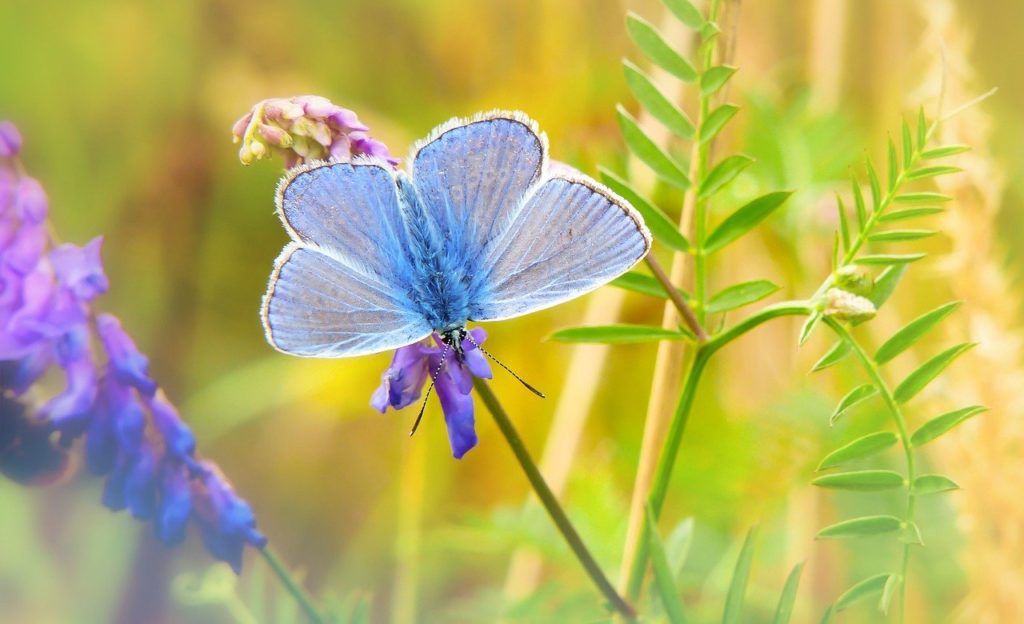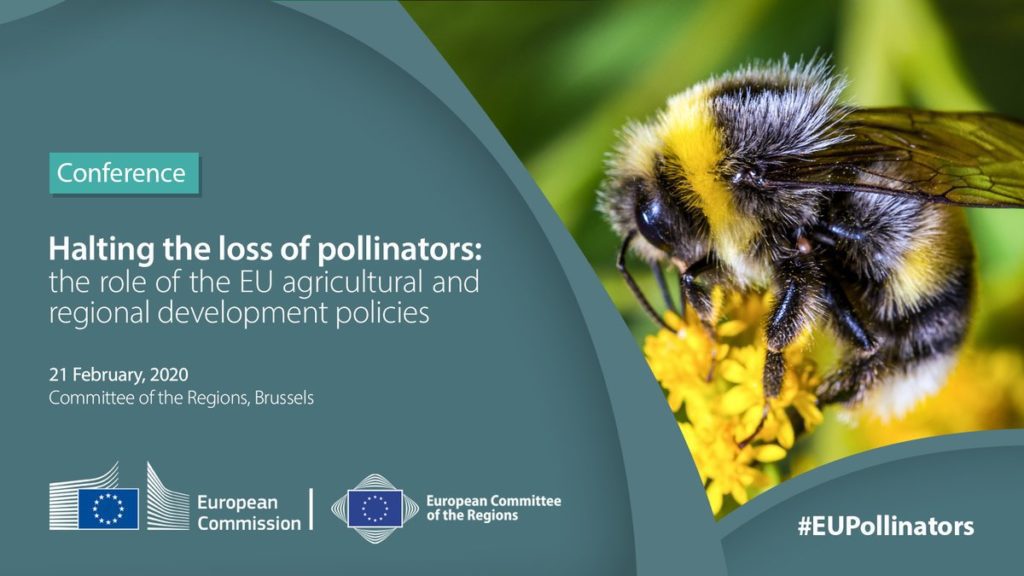#EUPollinators: halting the loss of pollinators
“Pollinator species are essential. Their dramatic decrease has been the result of land use and climate change, among other. It is of great importance that all policies concerning agriculture and forestry are coordinated.” Roby Biwer, Member of the European Committee of the Regions.
Why are Pollinators in decline?
In past decades in Europe, pollinators have dramatically declined. A lot of pollinators species disappeared or are threatened with extinction. For an overview of the species status in Europe, check the European Red List. However, not all species are in decline, some of them are expanding. But, in term of trends, bees species records decline in the world is very alarming.
What are the factors of decline?
It is important to have in mind that there is no one single factor of decline. The loss of pollinators is the result of a combination and interaction of factors. We can determine some drivers of decline in Europe such as the agriculture intensification, the use of agrochemical, climate change, pests and pathogens and also urban sprawl. This interaction of those factors results in a loss of food, loss of place to live, diseases and poisoning for pollinators.
But wait, what is pollination?
Pollination refers to the process of the transfer of pollen between the male and female parts of flowers. Pollinators in Europe are birds, bees, bats, butterflies, moths, beetles, or other animals, or even the wind. (Not only bees!) This transfer of pollen is a major step in the plant cycle, it allows the fertilization and is essential for the formation of seeds and fruits. Plants contribute to the nutrition of pollinators by supplying them with excess pollen or nectar. It is a mutual relationship.

97,5% flowering plant are animal pollinated.
The diversity of pollinators is also really important because species act differently and have a special impact assuring different eco-services. For further details, you can find reports of the NGO Bee-life.
However, crop pollination is a process important to ensure abundant biodiversity. It is a complex issue also related with food security, agriculture… Indeed, more wild insects means more fruits !
For all these reasons related to pollination, this subject mobilizes many actors: both the European Union and its Member States, as well as citizens and civil society. It is indeed an excellent angle to reconcile practices in a more eco-friendly sense, such as agriculture which need pollinators, for example.
What about Protected Areas?
For protected areas, pollinators are crucial, as it is explained in EHF’s policy paper. More pollinators mean more biodiversity and better ecosystems. Protected areas and Natura 2000 sites are the perfect way to implement European policies in favour of pollinators.
In regards to urban planning, Periurban Parks play a major role in preserving biodiversity and also halt the loss of pollinators, by preventing urban sprawl for instance. Private individuals can also act in favour of pollinators in the city through diversity-friendly gardening..
Park managers are working to preserve biodiversity and can have a huge impact on the occurrence and diversity of pollinators by favouring diversity of plants and flowers and reduce the use of pesticides. But more awareness is needed, and park managers can also play an important role in advising farmers on pro-environmental measures and thus create a stronger community link.
Among a lot of projects that involve pollinators in protected areas, Assessing Butterflies in Europe (ABLE) project implemented by our partners, Butterfly Conservation aim “to create a representative butterfly monitoring network across as many countries as possible in order to improve the targeting and efficiency of conservation measures within the European Union.”

Pollinators and the European Union policies
#EUPollinators
On the 21st of February, EUROPARC Team in Brussels participated in an EU Conference “Halting the loss of pollinators: the role of the EU agricultural and regional development policies” organised by the European Commission in cooperation with the Committee of the Regions. IUCN and IIEP were supporting the organisation.
The event had two main stated objectives :
→ Take stock of the contribution of the EU agricultural and regional development policies to the conservation of pollinators in the programming period 2014-2020;
→ Discuss how to build on lessons learnt to ensure more effective measures and projects in the 2021-2027 period. Link to the agenda
A web stream of the event is available here: (Main room JDE 52) and (Side room JDE 53)

The issue of pollinators has aroused a great deal of interest in the European Union over the last few years, as demonstrated by the EU Pollinators Initiative. In the current context of the Green Deal and the review of the Common Agricultural Policy (CAP), the Biodiversity Strategy post 2020 and the Farm to Fork Strategy, the pollinators issue gathers a lot of interests. First, it is part of the Green Deal vision. But also, the well-being of pollinators is the reflection of a policy coherence across sectors and policies. It is a good angle to reconciliate agricultural and biodiversity issues, by illustrating the mutual benefits of environmental protection.
The conference brought together a variety of actors from different scales to assess the effects of the CAP and to see what need to be improved. These actors were farmers, ministers from the Member States and people in charge of the new CAP in the European Union. Each speaker presented his or her actions in the field, the lessons learned, the positive points and those to be improved.
The CAP has a big influence on the habitat of pollinators. Indeed, landscape are really important. The CAP can be a tool to preserve high-nature value features including those on “ordinary farmland”. CAP can also regulate cropped land, less (more precise) pesticide and fertilizer, more tolerance of weeds, wildflower, more fallow, more crop rotation… This policy can also argues in favor of less intensive farming. It can also help to improve economic viability of extensive grazing systems needed to maintain habitat.
The main remarks of the conference:
About knowledge:
- Difficult to monitor the effect of CAP on pollinators. But it is not a reason to do not act.
- Lack of knowledge: better share-practices, peer to peer, training for integrative best management, offering online tool/training (the role of digitalisation)
- To better communicate environmental objectives: what we intent by these measures and obligations ?Need for a better data knowledge
About participation:
- Integrate all stakeholders: the project has to involve actively the farmers in the design and implementation
- Increase a human partnership between actors (authorities, farmers, beekepers, naturalist) through better communication/dialogue
About content:
- Need for more flexibility: to be well adapted to local conditions. (Idea of eco-scheme) Some farmers felt like they were losing power over their land, with the imposition of policies of the previous CAP measures.
- Need to change the mindset : we should rewarded farmers for their efforts in favor of biodiversity instead of compensating the loss of economic benefits.
- Need to highlight the interconnection with Natura2000 and Protected Areas
- To integrate rural development to be sure to leave no one behind and to have a holistic vision of the territory to avoid the rural depopulation
- Environmental mainstreaming and nature – based solutions on all investments
About implementation:
- Measure has to be simple, low cost and proven efficacy
- Maybe to think more on a voluntary approach
- Better coherence in policies (Farm to Fork Strategy and Biodiversity Strategy) and better work across DG REGIO works with DG ENV.
For more information on Assessment Report on Pollinators, Pollination and Food Production, we invite you to have a look at this IPBES report.